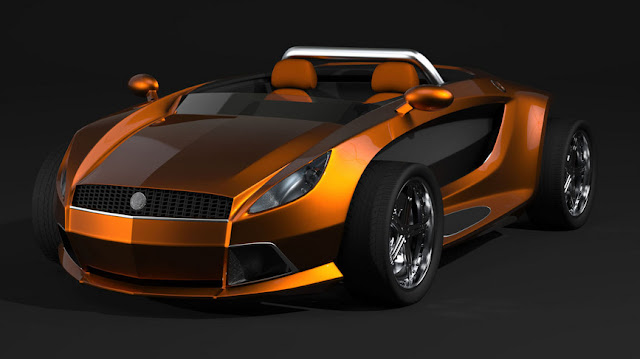Think of the name Dartz and, if you're up on your whale foreskin-upholstered SUVs, you'll invariably arrive at the Prombron. But while glad to furnish Eastern European mobsters with the machine that makes the Hummer look like a beauty queen, Dartz is keen to break out of the Prombron's mold with sleeker offerings. That's what led to the design of the chopped-down Nagel sedan and, more recently, to the Mojo roadster. Now Dartz has followed up with another design it calls the Jo-MoJo.
As promised, the Jo-Mojo is an electric roadster. Designed, like other Dartz concepts, by Eduard Gray, the Jo-Mojo packs an 80-horsepower electric motor that can be recharged (over who knows how long a timeframe) by a retractable solar panel that encloses the cockpit when parked and acts as the only roof to speak of.
For some inexplicable reason, even though the occupants are exposed to the elements in the open-air cabin, Dartz has also bothered to make the vehicle's body partially bulletproof. Thus, anyone riding shotgun might survive an attack from a rival syndicate, though anyone tall enough to see over the nonexistent windshield likely wouldn't.
Dartz says the roadster is slated to debut at the Top Marques show in Monaco – where else? – but if Monte Carlo isn't on your itinerary, you can check out the video clip and press release after the jump, along with the renderings in the high-res image gallery.











































.jpg)

.jpg)
.jpg)




